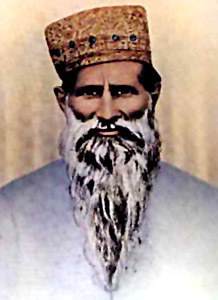 The Radha Soami Movement or faith derives its name from its original founder, the Supreme Being, Radha Soami. He appeared in the world in human form and designated himself as Sant Satguru or true Guide. It is considered by its followers as a true way to attain God realization.
The Radha Soami Movement or faith derives its name from its original founder, the Supreme Being, Radha Soami. He appeared in the world in human form and designated himself as Sant Satguru or true Guide. It is considered by its followers as a true way to attain God realization.
According to Radha Soami this Holy name Radha Soami signifies both the Supreme Being and the original Spirit which originated from his holy feet. The Supreme Being manifests in the world in Sant Satguru or through his emanations like Sadhu Guru. No intoxicating drink or animal foods are to be taken and immoderate indulgence in any desire is to be avoided.
Teachings of Radha Soami Movement
It basic belief is that there is a spiritual purpose to human life. There is only one God and all are expressions of his love. Individuals can realize the presence of God within themselves by performing the meditation practice according to the teacher`s instructions. Spiritual growth is the ultimate motive.
A vegetarian diet encourages respect and empathy for all life and acknowledges that there is a debt to be paid for taking any life unnecessarily. Abstaining from intoxicants improves ones ability to concentrate and calms the mind during meditation. Members are advised not be a burden on society. This sect does not involve itself in the personal lives of its members. By practicing meditation daily as instructed by the living master, helps to escape from the cycles of birth and death with the mercy of the Supreme Being.
Radha Soami conveys the same philosophy as that of Sikhism, Hinduism, and Sufism.
The Guru is everything in this faith. Guru is the centre of the whole. Most of its conceptions though are derived from the religion of Hinduism. The sect believes in union of the human soul with the spirit-current or word coming from the Supreme Being. The methods are imparted by the Guru secretly to each group. The followers need not give up their domestic life. There are no caste restrictions and no distinctions between men and women. They have to perform works of faith and charity, and should be moved by a spirit of service and prayer.
Proponents of Radha Soami Movement
The first Guru was an Agra banker of Kshatriya caste known as Siva Dayal Sahib. He proclaimed his doctrines in 1861. The second Guru Rai Saligram Sahib Bahadur a Kayastha by caste. The sect owes a great deal to his clear intellect and power of expression. The third Guru was a Bengali Brahman, Brahma Shankar Misra. He created a constitution for Satsang, and also set up a central Administrative Council. After his death some signs of disunity appeared in the sect and some other branches were set up but the central and main branch remains in Agra where it`s most famous Guru of recent times `Sahib Ji`, late Sir Anand Swaroop, presided over the affairs of this sect. A colony called Dayal Bagh was grown under him. It is an up-to-date colony with houses for the devotees, schools, business and industrial concerns and a temple for devotion. The sect has attracted a wide following from the middle classes.
Their teachings have resemblance to that of Kabir. The disciples are also known as Satsangi or Sadhu. It belongs to the Bhakti School. It has gained popularity because of its mysterious teachings, absence of Hath yoga and refusal to embrace sheer simplicity.



















